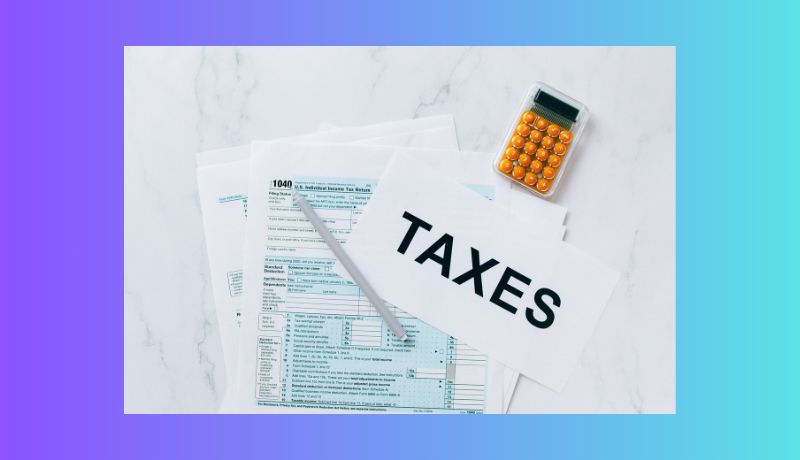Navigating the complex process of filing income taxes in India can often feel overwhelming, with various forms to fill, deadlines to meet, and rules that seem to change frequently. However, with the right guidance and understanding of the process, you can successfully file your income taxes without unnecessary stress. In this detailed guide, we will take you through each step of the income tax filing process in India, ensuring you have the knowledge and resources needed for a smooth and accurate experience.
Understanding the Income Tax System in India
The income tax system in India is governed by the Income Tax Act, which mandates that individuals, businesses, and other entities pay taxes to the government based on their income. Understanding the key components of the tax system, such as tax slabs, deductions, and exemptions, is crucial for accurate tax filing. Additionally, staying informed about any recent changes in tax laws can help you avoid potential errors in your tax return.
Income tax in India is levied based on the individual’s income slab, with varying rates for different income ranges. It is essential to know which tax slab you fall under to calculate your tax liability accurately. Moreover, being aware of the deductions and exemptions available can help you reduce your taxable income and ultimately lower your tax burden.
Documents Required for Income Tax Filing
Before you begin the process of filing your income taxes, ensure you have all the necessary documents in hand. Common documents required include your PAN card, Aadhaar card, bank statements, Form 16 (for salaried individuals), details of investments and expenses for deductions, and any other relevant financial records. Having these documents ready will streamline the tax filing process and prevent delays.
To file your income taxes accurately, you must first register for a Permanent Account Number (PAN), which serves as a unique identifier for tax purposes in India. Your PAN is essential for filing tax returns, carrying out high-value financial transactions, and communicating with the Income Tax Department. Applying for a PAN card is a straightforward process that can be done online through the NSDL or UTIITSL portals.
Step 1: Registering for a Permanent Account Number (PAN)
Applying for a PAN card is a crucial first step in the income tax filing process. Your PAN serves as a unique identifier for all tax-related transactions and communications with the Income Tax Department. To apply for a PAN card, you can visit the NSDL or UTIITSL website and fill out the online application form. Make sure to provide accurate information and supporting documents to avoid any delays in the processing of your PAN application.
Step 2: Gathering Your Income-Related Documents
Once you have your PAN card, the next step is to gather all income-related documents, such as Form 16 (for salaried individuals), bank statements, interest certificates, and any other sources of income. These documents will help you calculate your total income and determine your tax liability for the financial year. Organizing your documents systematically will make it easier to fill out the income tax return form accurately.
Step 3: Calculating Your Taxable Income
Calculating your taxable income involves determining the total income you have earned during the financial year and subtracting eligible deductions and exemptions. Your taxable income is the amount on which you will be taxed at the applicable income tax rates. Be sure to include income from all sources, such as salary, interest, rental income, and capital gains, while calculating your taxable income.
Example:
Let’s consider someone with the following details:
- Annual Salary: Rs. 8 lakhs
- HRA Received: Rs. 1.2 lakhs (within exemption limit)
- Investments under Section 80C: Rs. 1.5 lakhs
- Medical Insurance Premium (Section 80D): Rs. 70,000
Step-by-Step Calculation:
- Gross Total Income (GTI): Rs. 8 lakhs
- Exempt Income (EI): Rs. 1.2 lakhs (HRA)
- Deductions (D): Rs. 1.5 lakhs (Section 80C) + Rs. 70,000 (Section 80D) = Rs. 2.2 lakhs
- Taxable Income (TI): Rs. 8 lakhs – Rs. 1.2 lakhs – Rs. 2.2 lakhs = Rs. 4.6 lakhs
Assuming the current tax slabs (as of June 25, 2024):
- Up to Rs. 2.5 lakhs: 0%
- Rs. 2.5 lakhs to Rs. 5 lakhs: 5%
- Rs. 5 lakhs to Rs. 10 lakhs: 20%
Tax Calculation:
- Tax on first Rs. 2.5 lakhs (0%) = 0
- Tax on next Rs. 2.1 lakhs (Rs. 4.6 lakhs – Rs. 2.5 lakhs) = Rs. 2.1 lakhs * 5/100 = Rs. 10,500
Total Income Tax: Rs. 10,500 (approx.)
Health and Education Cess (4%): Rs. 10,500 * 4/100 = Rs. 420
Final Income Tax Payable: Rs. 10,500 + Rs. 420 = Rs. 10,920 (approx.)
Tax Calculator
Step 4: Filling Out the Income Tax Return Form
Filling out the income tax return form accurately is crucial to avoid any discrepancies or errors in your tax return. Depending on your income sources and the complexity of your financial situation, you may need to fill out different ITR forms. Ensure you provide correct details, including income, deductions, tax payments, and bank account information, to facilitate a smooth tax filing process.
Step 5: Submitting Your Income Tax Return
Once you have filled out the income tax return form, it's time to submit it to the Income Tax Department. You can file your tax return online through the e-filing portal of the Income Tax Department or by using the services of authorized e-return intermediaries. Make sure to verify the details provided in the return before submission and keep a copy of the acknowledgment receipt for future reference.
Companies That Can Help You:
SJ Consultancy Services
Pratul Agrawal & Associates
Infinity
Taxaj Corporate Services LLP
Namdeo And Associates
FinClover Advisor
NSSP Tech World Private Limited
Risiko Consulting LLP
Draft Notions Services Private Limited
Amatya Professional Services Private Limited
Common Mistakes to Avoid While Filing Income Taxes
When filing your income taxes, it's important to be vigilant and avoid common mistakes that could lead to penalties or scrutiny by the Income Tax Department. Some common errors to watch out for include incorrect declaration of income, mismatch in TDS details, failure to report all income sources, and missing deadlines for filing tax returns. By double-checking your tax return and seeking professional assistance if needed, you can ensure a hassle-free tax filing experience.
Conclusion: Importance of Timely and Accurate Income Tax Filing
Filing your income taxes accurately and on time is not just a legal requirement but also a financial responsibility. By adhering to the prescribed deadlines and guidelines set by the Income Tax Department, you can avoid penalties and maintain a good standing with the tax authorities. Timely tax filing also allows you to claim deductions, avail tax benefits, and plan your finances effectively. With the information and guidance provided in this comprehensive guide, you can navigate the income tax filing process in India with confidence and ease.


